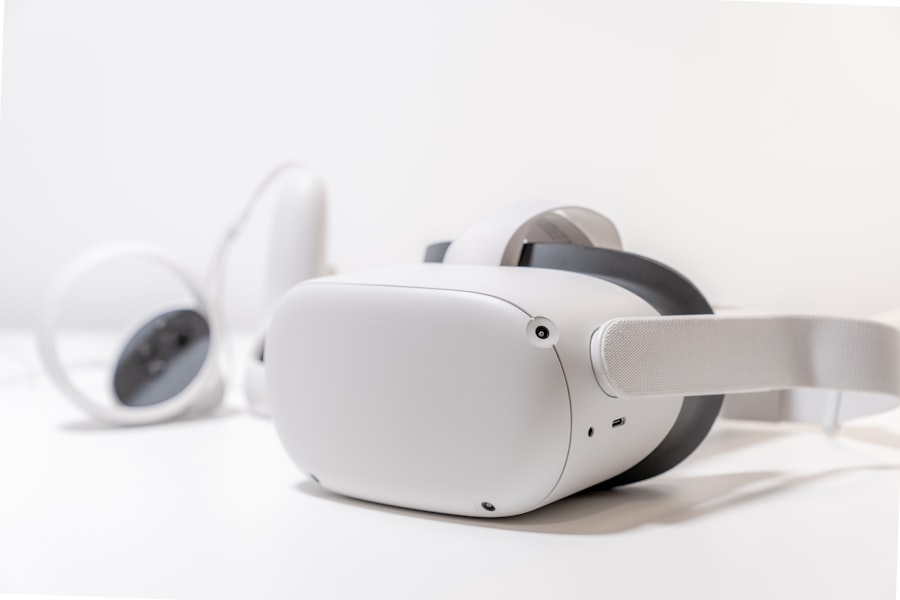The integration of technology and the humanities has become a significant area of study, transforming our understanding and interaction with human culture, history, and artistic expression. Traditional humanities disciplines such as literature, philosophy, history, and the arts are now being enhanced by technological advancements, providing new research methods and analytical tools. This convergence represents a fundamental change in how knowledge is accessed, interpreted, and shared by scholars, students, and the public.
The digital age has brought about a revitalization of the humanities through innovative practices that transcend conventional boundaries and promote interdisciplinary collaboration. The incorporation of technology into humanities studies prompts a reevaluation of how we examine human experience. Digital tools now allow researchers to process large datasets, create immersive environments, and interact with audiences in unprecedented ways.
This shift, however, is not without challenges, raising questions about authenticity, representation, and the implications of relying on digital media to understand complex human narratives. Despite these concerns, the potential for technology to enhance our understanding of cultural artifacts and historical contexts is significant. As this relationship continues to evolve, it becomes evident that technology is not merely supplementary to the humanities but a driving force for new forms of inquiry and expression.
Key Takeaways
- Technology has become an integral part of humanities research and education, offering new tools and methods for studying history, culture, literature, and art.
- Digital archives provide easy access to a wealth of information, allowing researchers to explore and analyze historical documents, artifacts, and artworks from anywhere in the world.
- Data analysis and visualization tools enable humanities researchers to uncover patterns, trends, and insights from large datasets, enhancing their understanding of human culture and society.
- Virtual reality and augmented reality offer immersive experiences that allow scholars and students to explore historical and cultural sites, bringing the past to life in new and engaging ways.
- Digital storytelling and multimedia tools provide innovative ways for artists and writers to create and share their work, expanding the possibilities for expression and interpretation in literature and art.
Digital Archives and Access to Information
Digital archives have revolutionized access to information, democratizing knowledge in ways that were once thought impossible. By digitizing historical documents, manuscripts, photographs, and other cultural artifacts, institutions are making these resources available to a global audience. This shift has profound implications for researchers, educators, and the general public alike.
Scholars can now access primary sources from anywhere in the world, allowing for more comprehensive and diverse perspectives in their work. The ability to explore these archives online fosters a sense of inclusivity, as individuals who may not have had the means or opportunity to visit physical libraries or museums can now engage with materials that were previously out of reach. Moreover, digital archives serve as a vital tool for preserving cultural heritage.
As physical artifacts deteriorate over time or become vulnerable to environmental threats, digitization offers a means of safeguarding these treasures for future generations. Institutions are increasingly recognizing the importance of not only preserving but also curating these digital collections in ways that enhance user experience. Through thoughtful organization and innovative search functionalities, digital archives can facilitate serendipitous discovery and encourage deeper engagement with the materials.
This accessibility not only enriches academic research but also empowers individuals to explore their own histories and identities through the lens of these digital resources.
Data Analysis and Visualization in Humanities Research
The advent of big data has transformed the landscape of humanities research, enabling scholars to employ sophisticated data analysis techniques that were once the domain of the sciences. By harnessing computational tools, researchers can analyze patterns within large datasets, uncovering insights that might remain hidden through traditional qualitative methods. This quantitative approach allows for a more nuanced understanding of cultural phenomena, revealing trends in literature, art movements, or historical events that can inform broader narratives about human experience.
The ability to process and analyze data at scale opens up new avenues for inquiry, challenging scholars to rethink their methodologies and embrace interdisciplinary approaches. Data visualization plays a crucial role in this process, transforming complex datasets into accessible visual formats that enhance comprehension and engagement. Infographics, interactive maps, and dynamic charts allow researchers to present their findings in compelling ways that resonate with diverse audiences.
By translating abstract data into visual narratives, scholars can communicate their insights more effectively, fostering a deeper appreciation for the intricacies of human culture. This synergy between data analysis and visualization not only enriches academic discourse but also invites public participation in the exploration of humanities research. As audiences engage with these visual representations, they become active participants in the conversation about culture and history, bridging the gap between academia and the wider community.
Virtual Reality and Augmented Reality in the Study of History and Culture
Virtual reality (VR) and augmented reality (AR) technologies are redefining how we experience history and culture by immersing users in interactive environments that bring the past to life. These technologies allow individuals to step into historical settings or engage with cultural artifacts in ways that transcend traditional learning methods. For instance, VR can transport users to ancient civilizations or significant historical events, providing a visceral understanding of context that textbooks alone cannot convey.
This immersive experience fosters empathy and connection, allowing users to engage with history on a personal level as they navigate through reconstructed environments or interact with virtual representations of historical figures. AR complements this experience by overlaying digital information onto the physical world, enhancing our understanding of cultural landmarks and artifacts. Museums and cultural institutions are increasingly adopting AR applications to enrich visitor experiences; for example, users can point their devices at an artwork to access additional information about its creator or historical significance.
This blend of digital content with real-world environments encourages exploration and curiosity while making learning more engaging. As VR and AR technologies continue to evolve, they hold immense potential for transforming education in the humanities by creating dynamic learning experiences that captivate audiences and inspire deeper inquiry into our shared cultural heritage.
Digital Storytelling and Multimedia in Literature and Art
Digital storytelling has emerged as a powerful medium for expressing narratives through a combination of text, images, audio, and video. This multimedia approach allows creators to craft rich narratives that resonate with contemporary audiences accustomed to consuming information through various digital platforms. In literature, authors are experimenting with interactive storytelling techniques that invite readers to engage with the narrative in non-linear ways.
By incorporating hyperlinks, multimedia elements, and user-generated content, digital literature challenges traditional notions of authorship and narrative structure while fostering a more participatory reading experience. In the realm of art, digital platforms provide artists with new avenues for expression and engagement. Artists can create immersive installations that incorporate soundscapes or interactive elements that invite viewer participation.
Social media platforms serve as galleries where artists can share their work with a global audience while receiving immediate feedback from viewers. This democratization of art allows for diverse voices to emerge and flourish outside traditional institutional frameworks. As digital storytelling continues to evolve, it blurs the lines between creator and audience, fostering collaborative experiences that redefine how we understand literature and art in the digital age.
Online Education and the Digital Humanities
The rise of online education has transformed how we approach learning in the humanities, making it more accessible than ever before. With platforms offering courses from esteemed universities around the world, students can now engage with subjects ranging from philosophy to art history without geographical constraints. This democratization of education empowers individuals who may not have had access to traditional academic settings due to financial or logistical barriers.
Online courses often incorporate multimedia resources—such as video lectures, interactive discussions, and digital assignments—that cater to diverse learning styles while fostering a sense of community among participants. Moreover, online education encourages innovative pedagogical approaches within the digital humanities. Instructors are increasingly utilizing collaborative tools that allow students to work together on projects regardless of their physical locations.
This fosters a sense of global citizenship as learners engage with peers from different cultural backgrounds and perspectives. Additionally, online platforms often facilitate interdisciplinary learning by connecting students with experts from various fields—encouraging them to think critically about how technology intersects with human culture. As online education continues to evolve within the digital humanities framework, it holds great promise for shaping future generations of scholars who are equipped to navigate an increasingly complex world.
Ethical Considerations in the Use of Technology in the Humanities
As technology permeates every aspect of our lives—including the study of humanities—it is imperative to address the ethical considerations that arise from its use. One significant concern is the potential for bias in algorithms used for data analysis or content curation. If not carefully designed and monitored, these algorithms can perpetuate existing inequalities or misrepresent marginalized voices within cultural narratives.
Scholars must remain vigilant about how technology shapes our understanding of history and culture while advocating for inclusive practices that amplify diverse perspectives. Furthermore, issues surrounding privacy and consent become increasingly relevant as digital archives grow in size and scope. The digitization of personal letters or photographs raises questions about ownership rights and ethical stewardship of cultural heritage.
Institutions must navigate these complexities thoughtfully while ensuring that they respect individuals’ rights while promoting public access to knowledge. As we embrace technology’s potential within the humanities, it is crucial to foster ongoing dialogue about these ethical considerations—ensuring that our pursuit of knowledge remains grounded in principles of equity, respect, and responsibility toward both individuals and communities alike.
In exploring how technology is reshaping various fields, it’s crucial to consider its impact on the humanities. A related article that delves into the technological advancements in another domain is “To Buy Time for a Failing Startup, Recreate the Engineering Process” on ENICOMP. This piece discusses how rethinking and innovating within the engineering processes can provide crucial lifelines to struggling startups, highlighting the broader theme of technology’s transformative power across different sectors. For those interested in understanding how similar principles can be applied to the humanities, this article offers valuable insights. You can read more about it here.
FAQs
What is the role of technology in transforming the humanities?
Technology is playing a significant role in transforming the humanities by providing new tools and methods for research, analysis, and communication. It has enabled scholars to access and analyze vast amounts of data, collaborate across disciplines and institutions, and present their findings in innovative ways.
How has technology changed the way humanities research is conducted?
Technology has changed the way humanities research is conducted by providing access to digital archives, databases, and tools for text analysis, data visualization, and mapping. It has also facilitated collaboration and communication among researchers, allowing for interdisciplinary and international projects.
What are some examples of how technology is being used in the humanities?
Some examples of how technology is being used in the humanities include digital mapping and visualization tools for studying historical and cultural phenomena, text analysis software for studying literature and language, and digital archives and databases for accessing primary sources and historical documents.
How is technology impacting the presentation and dissemination of humanities research?
Technology is impacting the presentation and dissemination of humanities research by enabling scholars to create interactive and multimedia-rich publications, websites, and exhibitions. It has also facilitated open access to research findings and increased public engagement with humanities scholarship.
What are the potential challenges and limitations of using technology in the humanities?
Some potential challenges and limitations of using technology in the humanities include issues related to data privacy and security, digital preservation, and the need for technical skills and resources. There are also concerns about the potential for bias and limitations in the algorithms and tools used for analysis.



